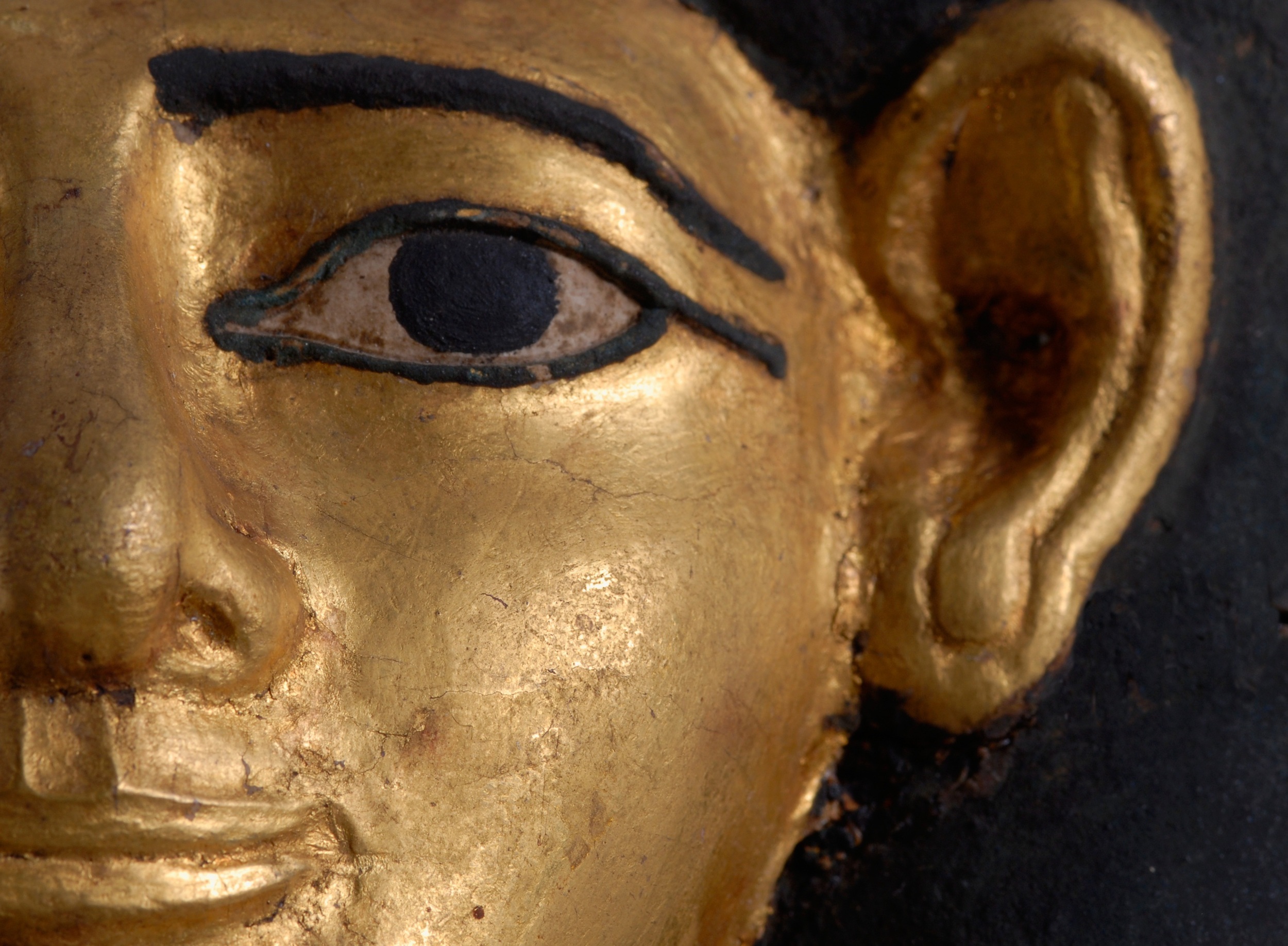The gorgeous, glowing, golden masks that transformed the mortal into the divine.
The Egyptians were superb organisers of their own afterlife. Eternity was less about wishful thinking, and more about good, thorough preparation.
And one of the must-haves for a successful hereafter was a great mummy mask.
Funerary masks became a new fashion during Egypt's Middle Kingdom. They were designed to cover the mummy's head and shoulders and give it a lifelike appearance. These masks were often made from cartonnage, which was made by soaking layers of linen in plaster and then painting it once it dried.
A good-looking portrait on the mummy was important in case the actual mummification wasn't up to scratch and failed to preserve the deceased's features, or if the head was lost in the frenzied search for jewels among the mummy wrappings by thieves.
Masks were also magically activated to allow the deceased to again breathe, see, hear and enjoy the choice snacks left in the tomb chapel by grieving family members.
For the wealthiest, the face was often gilded to make a connection with the sun. The Egyptians believed that the sun god, Re, bore flesh of pure gold, and the mask's golden skin helped the deceased's chances of sharing in the sun's daily eternal cycle of rebirth at dawn.
If you didn't quite have the means to afford actual gold, your mask could be painted yellow in imitation.
Deep in the darkness of the tomb, this bright, golden (or yellow) mask reflected the deceased owner's new, divine status; the god or goddess that they had transformed into. That had to provide some level of comfort in their final hours on earth.
This mummy mask made of gilded cartonnage is from the Middle Kingdom's 12th Dynasty, near the start of this new golden fashion statement. It is now part of the Myers Collection at Eton College in the UK.
